Quinoa—The Remarkable Desert Plant in Bolivia
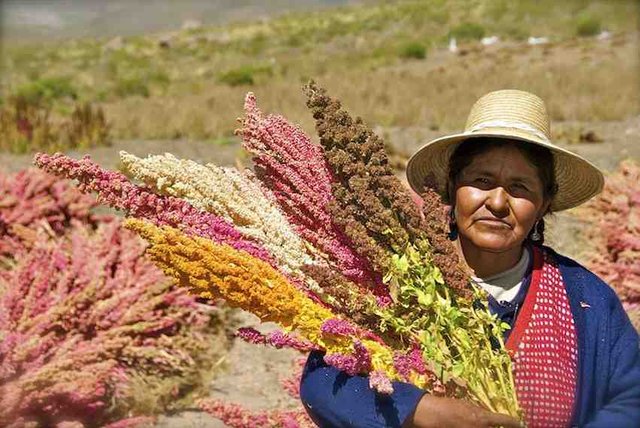
Quinoa farmer in Bolivia – by the FAO
FEW places present more difficulties to farmers than the South American altiplano. Here, especially in the dry south, poor quality soil is scorched by day and frozen by night. Precipitation, as low as eight inches [20 cm] a year, often comes in devastating hailstorms.
Nevertheless, this rugged land produces a desert plant that could play a role in alleviating world hunger. It is called quinoa. And it is important not only to farmers here in the Andes but to researchers the world over. Just what is quinoa? How is it used by the inhabitants of the Andes? And why may it one day have global impact?
A Food That Grows in the Desert
Quinoa is a leafy herb that grows up to six feet [2 m] tall and produces an abundance of seeds—seeds that serve as a nutritious food. It is an amazingly sturdy plant that thrives even in the harsh climate of the South American altiplano.
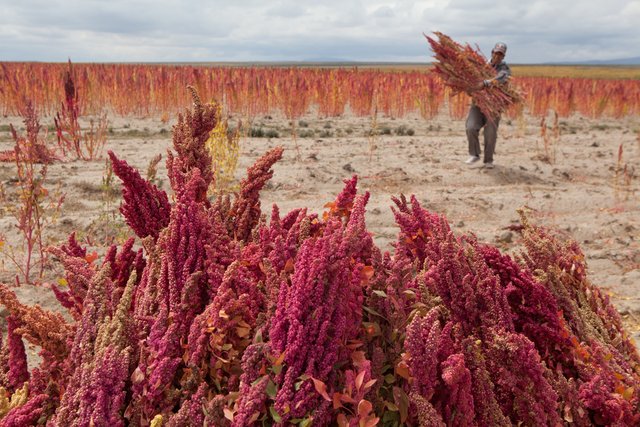
After they are cut, stalks of quinoa are then arranged in rows and stacked vertically in an interweaving pattern so as to withstand strong winds. Marius Stankiewicz/Al Jazeera
A Bolivian woman named Felicidad, for example, farms land that is too rocky to be plowed. Yet, she can plant quinoa simply by digging holes in the ground with a spearlike instrument and then dropping in the seed. Within months, and with a minimum of care, the quinoa matures. The desert is then set aflame with color—yellow, purple, green, and red. There are some 17 kinds of quinoa, and often a number of varieties grow together.
When the time for harvest arrives, the plants are uprooted, allowed to dry in the sun, and threshed by hand. Now another remarkable property of quinoa becomes manifest. It can be stored for years without spoiling. Quinoa proves to be a real treasure during long dry seasons. It is thus easy to see why it is the staple food of people in this part of Bolivia. But of what interest is it to the rest of the world?
An Ideal, Versatile Food
When the Spanish first explored the Americas, they discovered a number of foods that soon became favorites on tables throughout the world—maize, cocoa, tomatoes, pineapples, peanuts, and potatoes. But they took little notice of quinoa. Although it was grown throughout the Andes, the Spanish despised it as the food of peasants. As a result, most people were unaware of this amazing plant until recent years.
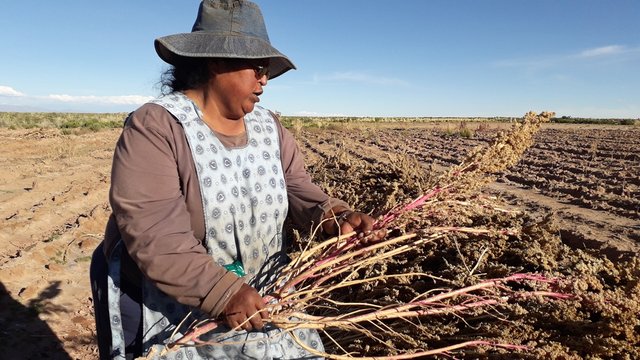
Alina Alcón is new to quinoa growing. Due to humidity her last crop was no good. Photo by Miriam Jemio
Yes, in lands far away from the Bolivian desert, people are beginning to appreciate the value of quinoa. “It’s the newest grain in town,” declared the San Francisco Chronicle. “Already considered a staple in the hip and trendy eateries of New York City, quinoa is now a bi-coastal menu hit.”
The reason for all this excitement? Nutritionists have discovered that quinoa is low in sugar and starch and rich in fiber and unsaturated oils. It contains many essential minerals and vitamins. But the main attraction as far as nutritionists are concerned is the protein in quinoa—50 percent more than in wheat, oats, barley, or rice and of superior quality. It contains an ideal balance of the amino acids that we need, including an important one called lysine that is normally scarce in vegetable protein and plentiful only in meat, fish, and eggs. That is why some experts call quinoa an ideal food.
Another remarkable feature of quinoa is its versatility. Quinoa has a unique, nutty taste. You can use it as a breakfast cereal. You can serve it cold with salad, hot with meat dishes, or sweet as a dessert. Andean people in particular have discovered a number of ways to eat quinoa.
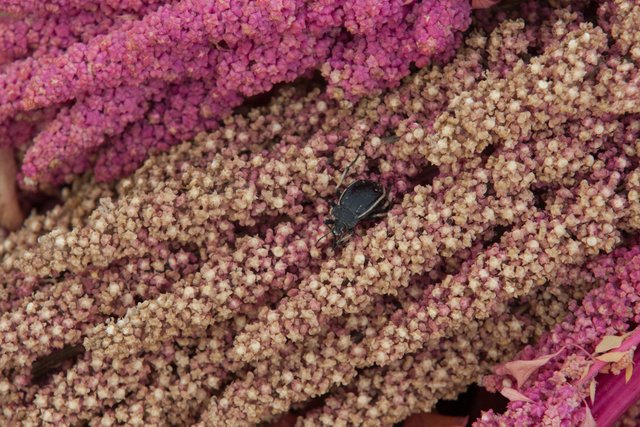
For its high nutritional value and adaptability to different climates, scientists believe quinoa can be the solution to desertification and land degradation caused by climate change. Marius Stankiewicz/Al Jazeera
“I never travel without quinoa,” says: “I must travel light, since, like everyone else, I go by bicycle. I always take along a bag of toasted quinoa flour. Mixed with water, it provides nourishing refreshment.”
Rosa, a Bolivian woman who grew up in a village on the altiplano, recalls yet other uses for the quinoa seeds. “Mother used to make quinoa bread and biscuits with the flour she ground with a stone, and often she would just serve boiled quinoa with an egg.” Later, Rosa moved to the city and worked for years as a cook for a wealthy family. She introduced them to a dish they became quite fond of: quinoa soup! “You just chop some onions, carrots, broad beans, and squash,” she explains, “and then boil them with whole washed quinoa grain in meat stock until the quinoa grains burst.* Salt may be added after it is cooked.”
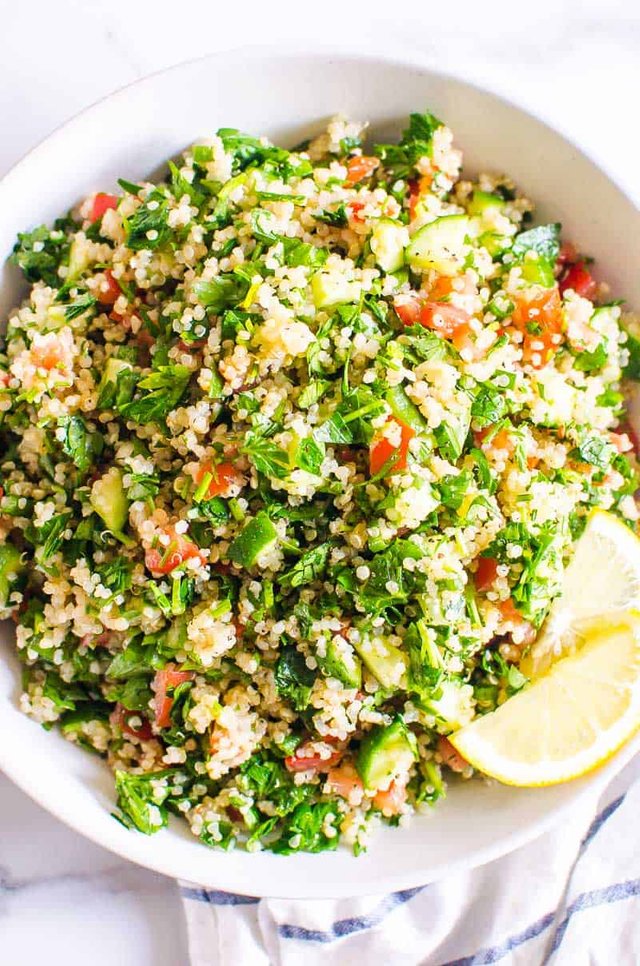
What is the favorite quinoa dish among Rosa’s own children? “Tortillas!” cries a little boy. “Ah, yes,” replies Rosa, “they are easy to make. You just cook washed quinoa grains as you would normally cook rice but without salt. The quinoa can then be stirred into a paste with a spoon. Stir in an egg, a little milk, and some wheat flour. Now you may add a pinch of salt and a pinch of cinnamon. Then fry the mixture as you would pancakes, a spoonful at a time—delicious!”
A Key to Solving World Hunger?
Famine relief organizations believe that quinoa could play a key role in reducing world hunger. The grain is tough and can be grown in a hostile environment without expensive farming equipment. Through crossbreeding, researchers have already developed exceptionally tough strains of quinoa that are resistant to such adverse conditions as hailstorms and frost. Additionally, it is nutritious and delicious and can be served in a variety of ways.
Whether quinoa will make a dent in the global hunger problem, only time will tell. In the meantime, you may want to see if you can obtain quinoa locally. With a little imagination and experimentation, you may be able to add to your menu a nutritious dish made of quinoa—the remarkable desert plant.
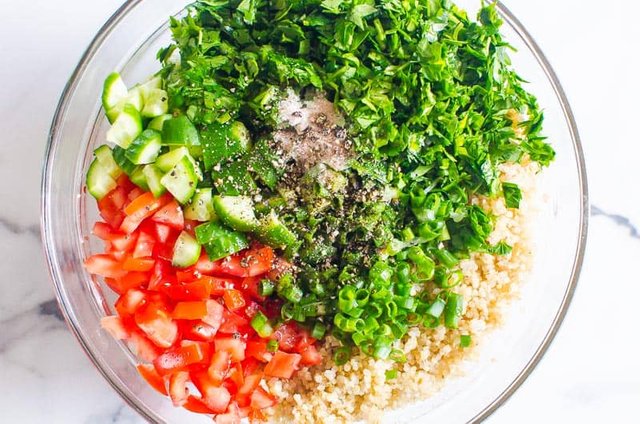
Source:ifoodreal
[Footnotes]
Quinoa sold in packets has usually been washed industrially to remove the bitter husks. Cooking times thus vary widely according to the variety of quinoa, how it was processed, and the altitude at which it is cooked.
Thanks for reading my post, and hope you will follow, comment and upvote to keep me engage for more. Let me your your experience about this plant food.